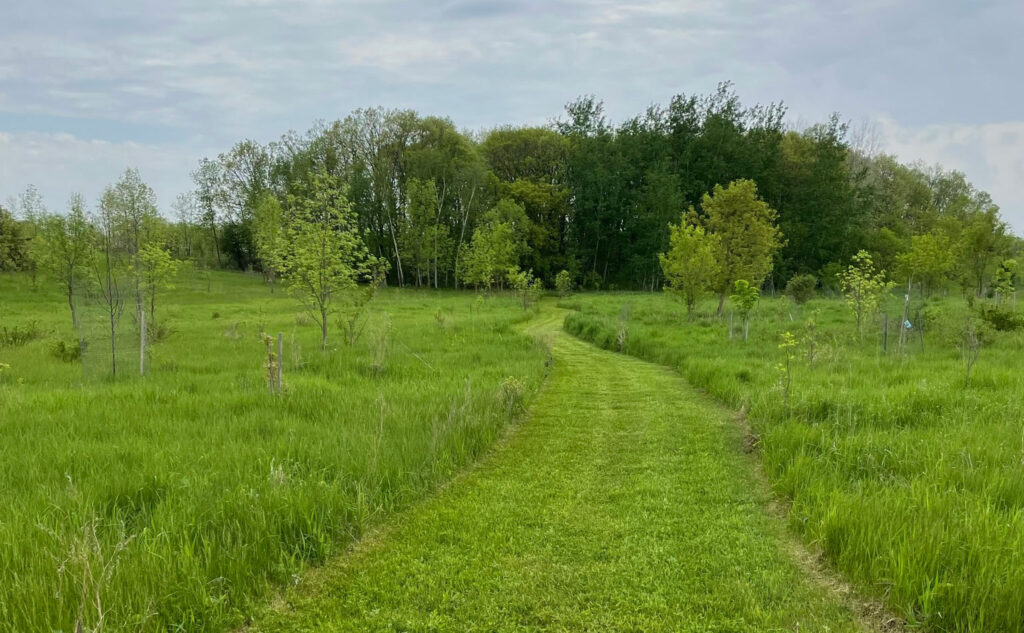
Overview:
Prairie Woods Arboretum is a private, family owned and operated plant collection in central Minnesota. As the name suggests, its location is on the line where Minnesota’s southwest prairie habitat converges with the northeast mixed woods. It is mixed woods as it is also the transition zone between the deciduous hardwoods of the southeast to the coniferous stands of the north.
Mission:
The goal of the Arboretum is to host the most extensive plant collection as the climate will allow. These plants are strategically located along a network of foot trails where they can be easily observed. In general plants are planted in groupings of related types, but habitat differences may override this practice.
Visiting:
The Arboretum is private land and there is strictly no trespassing on the property. Visitors are taken on a tour by personal invitation. If you are a plant enthusiast and would be interested in seeing the collection, please use the contact form at the upper right. We enjoy connecting with like-minded enthusiasts. It is not a place for family picnics, volleyball games, weddings, or any other such public activity. Our focus is on appreciating the natural world and not intended to be a “pretty” backdrop for events.
Future:
As the collection grows and matures, we hope to host plant-centered events. The events will have two main components, education and sales/trade. Education will be in the form of presentations, tours, and demonstrations. Sales and trades will be on specific days where visitors may purchase plants for their own properties. We are a licensed retail nursery in the state of Minnesota. Check back for more information on this in the coming years.
Geological Characteristics:
The region around Little Sauk, Minnesota, and southern Todd County is part of the broader geological region known as the Glacial Till Plain. This area was shaped by the last glacial period, specifically the Wisconsin Glaciation. As the glaciers advanced and retreated, they deposited a variety of glacial sediments, including clay, silt, sand, and gravel, which make up the fertile soils of the region.
Biome and Ecological Characteristics:
- Merging Forests: Much of southern Todd County falls within the Deciduous Forest biome. This biome is characterized by a mix of broadleaf, deciduous trees such as oak (including northern red oak and bur oak), maple, basswood, and ash. These forests are known for their vibrant fall foliage. It is also at the point where the deciduous forests start to transition into the coniferous forests of northern Minnesota.
- Prairies and Savannas: Historically, the area would have had a mixture of prairies and oak savannas, which are transitional ecosystems between prairies and forests. Oak savannas would have featured scattered oak trees with a grassy understory.
- Wetlands: The region contains various wetland types, including marshes, swamps, and bogs. These wetlands are crucial for waterfowl and provide habitat for a variety of plant and animal species. At the arboretum there are two woodland ponds, natural springs, and a small crick which is often dammed by beaver.
- Lakes and Rivers: The presence of lakes and rivers in the region provides habitat for aquatic species and contributes to the diversity of the local ecosystems. However, there are no rivers or lakes as part of the arboretum itself. The nearest river is Sauk River, into which the crick drains in about 1/4 mile from the property line.
- Wildlife: The area is home to a diverse range of wildlife, including white-tailed deer, various small mammals, waterfowl, and numerous bird species. This will also be cataloged here along with the plants.
- Agriculture: While much of the natural landscape has been altered for agriculture – both by tilling and pasturing, the region still supports a variety of native plant species. For each species cataloged on the website, it is indicated if it is naturally occurring on the property as well as if it is at least native at the state level.
